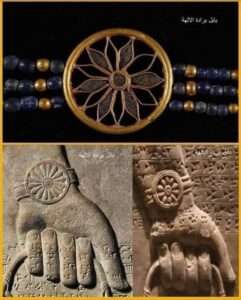The intriguing phenomenon of the so-called “Sumerian wristwatch,” often depicted in the ancient carvings of Sumer, has long captivated the curiosity of enthusiasts and researchers alike. These circular objects adorning the wrists of figures in Sumerian art have given rise to a plethora of fantastical theories, ranging from ancient technological devices to extraterrestrial relics. However, experts versed in Mesopotamian history and archaeology provide a more grounded interpretation of these enigmatic artifacts.
The enigmatic “wristwatches” are now recognized to symbolize decorative bracelets or armbands rather than advanced timekeeping instruments. In the rich tapestry of Sumerian culture, such adornments were prevalent, serving as markers of societal status, wealth, or divine favor. The intricate depictions found in Sumerian carvings frequently showcase deities or prominent individuals bedecked with these ornate accessories, underscoring their significant social or celestial standing.

This debunking of the myth surrounding the so-called “wristwatches” not only sheds light on their true nature but also enhances our comprehension of Sumerian customs and beliefs. It serves as a poignant reminder of the imperative to contextualize historical artifacts within the framework of their era, rather than imposing contemporary interpretations onto them.
The Sumerian wristwatch, once shrouded in mystery and speculation, now stands as a testament to the artistic and symbolic sophistication of an ancient civilization. Through the discerning eyes of experts in Mesopotamian studies, we gain a deeper appreciation for the cultural nuances embedded within Sumerian art, emblems, and artifacts. In unraveling the enigma of the “wristwatch,” we unlock a doorway to a bygone era, offering a glimpse into the intricate tapestry of Sumerian society and its reverence for symbolism and status.
In conclusion, the so-called “Sumerian wristwatch” serves as a poignant reminder of the intrinsic connection between material culture and societal values, urging us to delve beneath the surface of ancient artifacts to unravel their true significance. As we traverse the realms of Sumerian art and archaeology, let us approach these relics with reverence and insight, honoring the legacy of a civilization that continues to intrigue and inspire us to this day.





